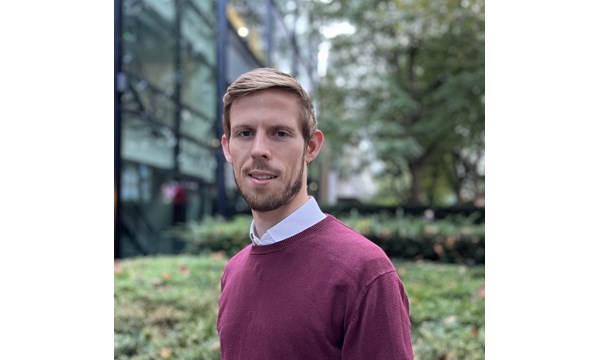Sign up today to get the best of our expert insight in your inbox.
COP29 key takeaways
Progress on finance and carbon, but still much to do in Belém
5 minute read
Simon Flowers
Chairman, Chief Analyst and author of The Edge

Simon Flowers
Chairman, Chief Analyst and author of The Edge
Simon is our Chief Analyst; he provides thought leadership on the trends and innovations shaping the energy industry.
Latest articles by Simon
-
The Edge
A world first: shipping carbon exports for storage
-
The Edge
WoodMac’s Gas, LNG and the Future of Energy conference: five key themes
-
The Edge
Nigeria’s bold strategy to double oil production
-
The Edge
US tariffs – unpredictability is the strategic planners’ nightmare
-
The Edge
US upstream gas sector poised to gain from higher Henry Hub prices
-
The Edge
What comes after the Permian for IOCs?
Prakash Sharma
Vice President, Head of Scenarios and Technologies

Prakash Sharma
Vice President, Head of Scenarios and Technologies
Prakash leads a team of analysts designing research for the energy transition.
Latest articles by Prakash
-
The Edge
The narrowing trans-Atlantic divide on the energy transition
-
Opinion
Energy transition outlook: Asia Pacific
-
Opinion
Energy transition outlook: Africa
-
The Edge
COP29 key takeaways
-
The Edge
Is it time for a global climate bank?
-
The Edge
Artificial intelligence and the future of energy
Ed Crooks
Vice Chair Americas and host of Energy Gang podcast

Ed Crooks
Vice Chair Americas and host of Energy Gang podcast
Ed examines the forces shaping the energy industry globally.
Latest articles by Ed
-
Opinion
Inside the ‘crazy grid’
-
Opinion
The Big Beautiful Bill is close to passing
-
Opinion
Ceasefire in the Israel-Iran conflict
-
Opinion
The impact of the Israel-Iran conflict escalation on the global energy market
-
Opinion
EBOS: the unsung hero that’s accelerating clean energy deployment
-
Opinion
What the US attack on Iran’s nuclear installations means for energy
Nuomin Han
Principal Analyst, Head of Carbon Markets

Nuomin Han
Principal Analyst, Head of Carbon Markets
Nuomin provides clients with insights into emissions and climate-related development.
Latest articles by Nuomin
-
Opinion
Forecasting carbon offset use to 2050: what you need to know
-
Opinion
4 key carbon policy developments from Q1 2025
-
Featured
Carbon markets 2025 outlook
-
The Edge
COP29 key takeaways
-
Opinion
Can CCUS momentum overcome headwinds to the industry?
-
Opinion
5 things you need to know about carbon offsets in 2024
Peter Findlay
Director of CCUS Economics

Peter Findlay
Director of CCUS Economics
Peter leads the economics and project valuation function for CCUS projects globally.
Latest articles by Peter
-
Opinion
5 key ways to decarbonise cement production
-
The Edge
COP29 key takeaways
-
Opinion
Can CCUS help achieve Net Zero?
-
Opinion
Can CCUS momentum overcome headwinds to the industry?
-
Opinion
Enhanced oil recovery with captured CO2: insights on CCS-EOR
-
Opinion
Carbon management frequently asked questions part 3: CCUS
Peter Albin
Senior Research Analyst, Carbon Markets

Peter Albin
Senior Research Analyst, Carbon Markets
Peter is part of the Carbon Research team which delivers intelligence, data and thought leadership pieces.
Latest articles by Peter
-
Opinion
Forecasting carbon offset use to 2050: what you need to know
-
The Edge
COP29 key takeaways
-
Opinion
Video | Lens Carbon: Deep insight into carbon removal projects, costs, and more
-
Opinion
5 things you need to know about carbon offsets in 2024
-
Opinion
2024’s carbon policy so far: four key takeaways
Stephen Vogado
Senior Analyst, Carbon Policy

Stephen Vogado
Senior Analyst, Carbon Policy
Stephen focuses on carbon policy, taking a data-driven approach to help clients navigate the energy transition.
View Stephen Vogado's full profileThere’s tension every year at the UN’s Conference of the Parties (COP) but rarely as extreme as at this year’s COP29 in Baku. Today, all three pillars of the energy transition – affordability, security and sustainability – look precarious as governments the world over struggle to keep them in balance with domestic demands. Nine years on from the Paris Agreement, geopolitics, global trade tensions, wars in Ukraine and Gaza, and the risk of President-elect Trump withdrawing the US from the Paris Agreement compound the challenges of achieving an agreement on climate even as greenhouse gas emissions continue to rise. Against this background, expectations for Baku were modest, to say the least.
In the event, COP29 built on the positive momentum of a year ago, even if achieving consensus required an extra 35 hours beyond the planned finish to deliver a breakthrough on the last, important sticking points.
Progress was made on finance and carbon markets, the two main targets set for Baku. On the latter, the world has never been so close to finalising the framework of a globally traded voluntary carbon market. Even so, the challenges waiting in store for COP30 in Brazil in a year’s time are mounting.
COP29 also reiterated that emerging technologies – including carbon capture, storage and utilisation (CCUS), hydrogen and small modular reactors – are needed to decarbonise global energy systems. Countries reaffirmed their commitment to triple nuclear capacity by 2050, with the US announcing it would increase its nuclear generation fleet by 200 GW between now and 2050.
Finance tripled but is still well short of what’s needed
The primary aim of COP29 was to agree a new global deal on climate finance: the flow of capital from developed countries to low- and middle-income countries to support emissions reductions and climate change adaptation.
The final agreement set a goal of US$300 billion a year to be reached by 2035, triple the previous commitment of US$100 billion. A portent of the challenges ahead is that the initial target, agreed in 2009, took 13 years to deliver. The text also calls on governments “to work together to enable the scaling up of financing” to US$1.3 trillion a year, including all public and private sources.
The UN itself was among those to criticise the lack of ambition. However, we’d argue that the COP29 commitment is a good outcome, given the evident tensions that have emerged as governments in developed nations are forced to deal with domestic issues.
The fund for responding to loss and damage caused by climate change is now operational and will start financing projects from next year. However, there was no material increase in the financial support for the fund, which is about US$730 million.
Wood Mackenzie estimates the world needs US$3.5 trillion a year to reach net zero by 2050. Nearly a third of this amount needs to be spent in developing markets, which need financing support from public and private sources.
A global traded voluntary carbon market finally taking shape
Agreement was reached on implementing the text of Article 6, the final building blocks setting out how carbon markets will operate under the Paris Agreement and be used toward meeting nationally determined contributions (NDCs). This marks the culmination of nine years of negotiations, clearing a major hurdle for country-to-country trading and a carbon crediting mechanism to be fully operational.
The summit began promisingly with the rubber-stamping of the Article 6.4 methodology and carbon removal standards, which paved the way for operationalising the new Paris Agreement Crediting Mechanism (PACM)1. Wood Mackenzie’s Lens Carbon reveals that less than 5% of offsets available in the market belong to the removal category, while the vast majority of carbon offset projects avoid or reduce emissions.
However, there are no Article 6.4 issued offsets currently and the PACM Supervisory Body has a long list of deliverables to achieve before this becomes a reality. Developing methodologies and registry infrastructure are key challenges and we expect it to take two years before there is a fully operational market.
Article 6.2 allows countries to trade emission reduction and removals in a bilateral manner. It largely relies on countries’ discretion to define criteria for their internationally transferred mitigation outcomes (ITMOs); and allows targeted support for emerging technologies by mobilising international finance.
As examples, India has identified green hydrogen, green ammonia, sustainable aviation fuel and CCUS as eligible for generating Article 6.2 units, among many other activities. Some countries have already signed bilateral Article 6.2 deals and the greater certainty from COP29 will spur more country-to-country deals.
While much is left to do, the agreement in Baku signals that work to fully operationalise both Articles 6.2 and 6.4 can begin to pick up pace. A respected PACM and scaling of the bilateral cooperative approach will drive carbon market adoption at both corporate and country levels.
1 The PACM was previously referred to as the Sustainable Development Mechanism (SDM), it replaces the Kyoto Protocol’s Clean Development Mechanism (CDM).
The baton passes to COP30 in Brazil
The wrangling over the finance agreement is an ominous sign for COP30 in Brazil next year. Progress is being made in the unfolding transition but too slowly. The brutal reality is that emissions are still rising and no country is on track to meet its NDC targets, despite the efforts at Baku and previous COPs.
Time is short and the pressure intensifying for countries to get their act together. The final piece of the jigsaw that must be put in place at COP30 is that countries raise targets in their NDCs to put the world on track for a 2C pathway or lower – and deliver on the revised targets. Further delay will merely ramp up financial cost and risks to humanity from climate change.
Make sure you get The Edge
Every week in The Edge, Simon Flowers curates unique insight into the hottest topics in the energy and natural resources world.












